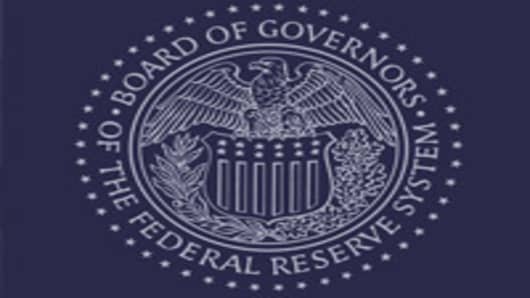- The Fed's QE program is $100 billion larger than expected.
- It is rolling out, however, at the pace expected: about $75 billion.
- So, technically, it's really "longer" than expected, instead of just "larger."
- In the olden, golden days we would have lead with "No change." The Fed funds target rate remains unchanged a 0 to 1/4 percent.
- The language about the timing of possible rate increases also remains unchanged, despite hints earlier from Bernanke that the Fed might want to explicitly signal that the market was figuring in too short a time line. We still just at "exceptionally low levels for the federal funds rate for an extended period."
- No explicit inflation target here. But the Fed moved talk about inflation from the second to first paragraph this statement: "Longer-term inflation expectations have remained stable, but measures of underlying inflation have trended lower in recent quarters." So that seems like an upgrade in concern about deflation.
- On the other hand, that language seems far less concerned about deflation than September's, in which inflation got its own paragraph: "Measures of underlying inflation are currently at levels somewhat below those the Committee judges most consistent, over the longer run, with its mandate to promote maximum employment and price stability. With substantial resource slack continuing to restrain cost pressures and longer-term inflation expectations stable, inflation is likely to remain subdued for some time before rising to levels the Committee considers consistent with its mandate"
- The deflation paragraph has been replaced by a jobs paragraph: "Consistent with its statutory mandate, the Committee seeks to foster maximum employment and price stability. Currently, the unemployment rate is elevated, and measures of underlying inflation are somewhat low, relative to levels that the Committee judges to be consistent, over the longer run, with its dual mandate. Although the Committee anticipates a gradual return to higher levels of resource utilization in a context of price stability, progress toward its objectives has been disappointingly slow."
- Is banking getting better? The Fed struck out this part of the statement that was included in the September statement: "Bank lending has continued to contract, but at a reduced rate in recent months."
Information received since the Federal Open Market Committee met in September confirms that the pace of recovery in output and employment continues to be slow. Household spending is increasing gradually, but remains constrained by high unemployment, modest income growth, lower housing wealth, and tight credit. Business spending on equipment and software is rising, though less rapidly than earlier in the year, while investment in nonresidential structures continues to be weak. Employers remain reluctant to add to payrolls. Housing starts continue to be depressed. Longer-term inflation expectations have remained stable, but measures of underlying inflation have trended lower in recent quarters.



